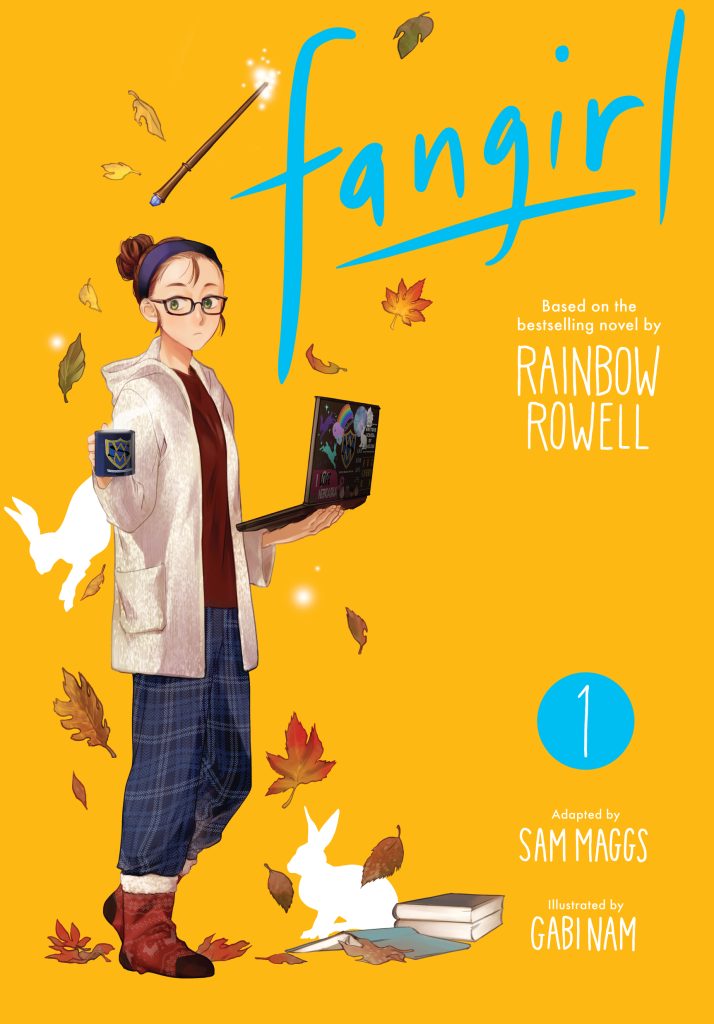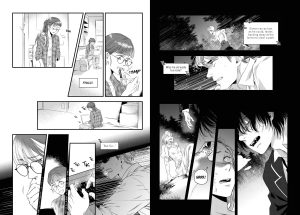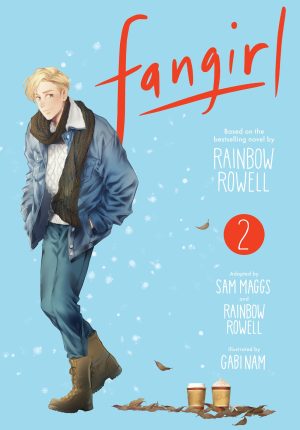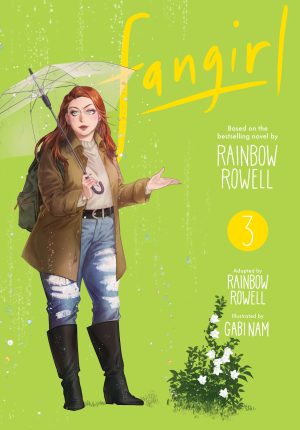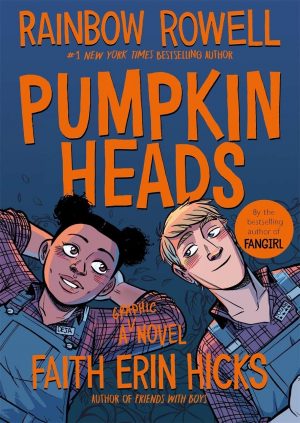Review by Ian Keogh
As twins, Cath and Wren have always shared everything, but just before starting college Wren wants to broaden her horizons and Cath is having difficulty understanding this doesn’t mean excluding her when they’re both attending the same college.
What’s united them all their lives is their love of the Simon Snow franchise, seven magical fantasy books down and only the series conclusion remaining. However, Cath hasn’t been waiting for that. She’s written her own conclusion uniting all the plot threats, and is getting 35,000 hits per chapter, except in her version Simon and his room mate Baz are lovers.
Sam Maggs and Gabi Nam are adapting Rainbow Rowell’s bestselling young adult novel, and were it not marketed promoting their names, you’d swear this was genuine manga. In a way it is. Being published by Viz is major recognition, and Nam’s art has the same black and white delicacy with attention to personality found in so much manga about teenage girls.
The novel includes sections of the fiction Cath writes, duly adapted here. Although Rowell takes pains to construct a different mythology, Simon Snow fandom is obviously based on Harry Potter fandom, but also featured are other stories Cath’s written. One of the best sequences is Cath attending the only class she’s been looking forward to, and forced to answer the question of why she writes.
While moments in Wren’s company occur, Fangirl is told entirely from Cath’s viewpoint, taking time to examine her anxieties before she’s gradually dragged out of her self imposed shell. As such it seems to be far too introspective and going round in circles before exploding into life with so many possibilities. By then the remaining cast have been introduced, varied and different, showing Cath other ways to live.
Maggs and Nam aren’t lacking for space, allocated four volumes to adapt the single novel, and while that fits the often leisurely pace of manga, there’s a feeling they’re extending the prose to fill those pages. Several scenes here continue over multiple pages when everything they communicate could be conveyed in one well planned single page, albeit with smaller illustrations. There are also places where the text might have been expanded. It’s a big deal for Cath to read her work in class, and perhaps that might have been worth showing rather than mentioned in passing, although Maggs may just be following Rowell’s text. Both problems only affect this volume, not anything going forward.
A couple of elements are entirely predictable to anyone beyond college age, but that’s deliberate on Rowell’s part as Fangirl concerns Cath’s growth, and there would be no growth without them. A couple of well judged bombshells are dropped before Fangirl 1 ends, each of which forces Cath to confront life beyond her fan fiction. That though is a matter for Fangirl 2.
Stick with this through the slower moments. It pays off in the end.
